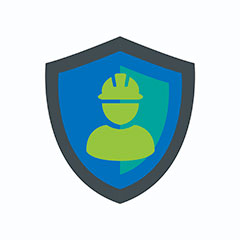Both types of armour are potentially dangerous for friendly infantry operating in close support.
- Visitors can check out the Forum FAQ by clicking this link. You have to register before you can post: click the REGISTER link above to proceed. To start viewing messages, select the forum that you want to visit from the selection below. View our Forum Privacy Policy.
- Want to receive the latest contracting news and advice straight to your inbox? Sign up to the ContractorUK newsletter here. Every sign up will also be entered into a draw to WIN £100 Amazon vouchers!
test please delete
Collapse
This is a sticky topic.
X
X
Collapse
-
-
Paradoxically, a tank is usually in its safest state when the commander is in a personally unsafe position, riding in the open, head out of the turret. In this rather high position (often called 'unbuttoned'), with no personal protection save maybe a helmet and a flak jacket, the commander can see around the vehicle with no restrictions, and has the greatest chance of spotting enemy antitank operations or natural and artificial obstacles which might immobilise or slow down the tank. Also, the tank itself is less visible as it can stay lower behind obstacles.How fortunate for governments that the people they administer don't thinkComment
-
Comment
-
Using periscopes and other viewing devices gives a commander much inferior field of vision and sense of the countryside. Thus, when a tank advances in hostile territory with hatches closed, the commander and the crew might be personally safer, but the tank as a whole is more at risk given the extremely reduced vision. In order to overcome this problem improvements in onboard optical systems are ongoing.How fortunate for governments that the people they administer don't thinkComment
-
Comment
-
main battle tank is designed to be highly mobile and able to tackle most types of terrain. Its tracks disperse the heavy weight of the vehicle over a large area, resulting in a specific ground pressure that might be lower than a man's footHow fortunate for governments that the people they administer don't thinkComment
-
Comment
-
Comment
-
he types of terrain that do pose a problem are usually extremely soft ground such as swamps, or rocky terrain scattered with large boulders. In "normal" terrain, a tank can be expected to travel at about 30 to 50 km/h. The road speed may be up to 70 km/h.How fortunate for governments that the people they administer don't thinkComment
-
Comment
- Home
- News & Features
- First Timers
- IR35 / S660 / BN66
- Employee Benefit Trusts
- Agency Workers Regulations
- MSC Legislation
- Limited Companies
- Dividends
- Umbrella Company
- VAT / Flat Rate VAT
- Job News & Guides
- Money News & Guides
- Guide to Contracts
- Successful Contracting
- Contracting Overseas
- Contractor Calculators
- MVL
- Contractor Expenses
Advertisers
Contractor Services
CUK News
- Andrew Griffith MP says Tories would reform IR35 Oct 7 00:41
- New umbrella company JSL rules: a 2026 guide for contractors Oct 5 22:50
- Top 5 contractor compliance challenges, as 2025-26 nears Oct 3 08:53
- Joint and Several Liability ‘won’t retire HMRC's naughty list’ Oct 2 05:28
- What contractors can take from the Industria Umbrella Ltd case Sep 30 23:05
- Is ‘Open To Work’ on LinkedIn due an IR35 dropdown menu? Sep 30 05:57
- IR35: Control — updated for 2025-26 Sep 28 21:28
- Can a WhatsApp message really be a contract? Sep 25 20:17
- Can a WhatsApp message really be a contract? Sep 25 08:17
- ‘Subdued’ IT contractor jobs market took third tumble in a row in August Sep 25 08:07





Comment